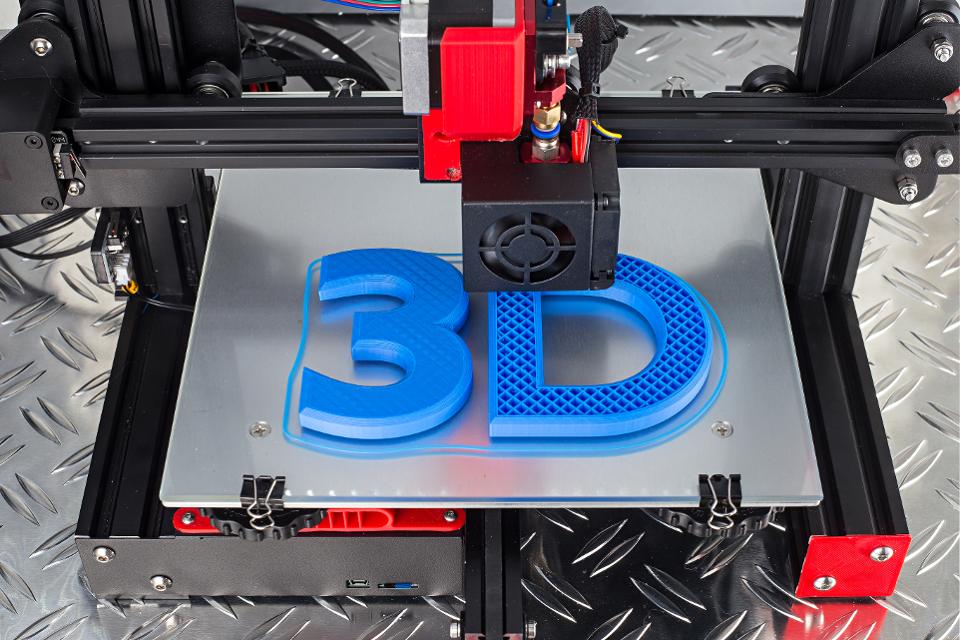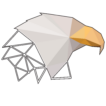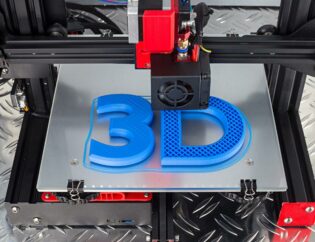
In 3D printing, the build surface is a critical component that can significantly impact the quality and success of your prints. Among the various options available, Polycarbonate Lexan sheets have emerged as a popular choice for 3D printing enthusiasts and professionals alike. This comprehensive guide will explore the benefits, installation, maintenance, and applications of using Polycarbonate Lexan sheets as a 3D printing bed build surface.
Understanding Polycarbonate Lexan Sheets
What is Polycarbonate Lexan?
Polycarbonate Lexan is a type of thermoplastic polymer known for its high impact resistance, optical clarity, and excellent thermal stability. It is a brand name for a specific type of polycarbonate resin produced by SABIC. Lexan sheets are widely used in various industries, including automotive, aerospace, construction, and now, 3D printing in India.
Properties of Polycarbonate Lexan Sheets
-
High Impact Resistance: Polycarbonate Lexan sheets are nearly unbreakable, making them an ideal choice for applications that require durability and toughness.
-
Optical Clarity: These sheets offer excellent transparency, allowing for clear visibility of the printed object during the printing process.
-
Thermal Stability: Polycarbonate Lexan can withstand high temperatures without deforming, making it suitable for use with a wide range of 3D printing materials.
-
Chemical Resistance: Lexan sheets are resistant to many chemicals, including acids and solvents, ensuring longevity and reliability.
-
Lightweight: Despite their strength, Polycarbonate Lexan sheets are lightweight, making them easy to handle and install in 3D Printing services in India.
Benefits of Using Polycarbonate Lexan Sheets as a 3D Printing Bed Build Surface
- Enhanced Adhesion
One of the most significant advantages of using Polycarbonate Lexan sheets as a build surface is the enhanced adhesion they provide. Proper adhesion is crucial for preventing warping and ensuring that the first layer of the print sticks firmly to the bed. Lexan sheets offer a textured surface that helps in gripping the filament, resulting in better adhesion and fewer print failures when 3D Printing Bangalore.
- Compatibility with Various Filaments
Polycarbonate Lexan sheets are compatible with a wide range of 3D printing filaments, including PLA, ABS, PETG, TPU, and more. This versatility makes them an excellent choice for users who work with different materials and need a reliable build surface that can handle various printing requirements.
- Durability and Longevity
Due to their high impact resistance and thermal stability, Polycarbonate Lexan sheets are incredibly durable and can withstand the rigors of continuous 3D printing. Unlike other build surfaces that may wear out or degrade over time, Lexan sheets maintain their integrity, providing a long-lasting solution for your affordable 3D printing services.
- Easy Maintenance
Maintaining a clean and smooth build surface is essential for achieving high-quality prints. Polycarbonate Lexan sheets are easy to clean and maintain, requiring only a simple wipe-down with isopropyl alcohol or a mild detergent to remove any residue or debris. This ease of maintenance ensures that your build surface remains in optimal condition for consistent printing results.
- Cost-Effective
While the initial cost of Polycarbonate Lexan sheets may be higher than some other build surfaces, their durability and longevity make them a cost-effective choice in the long run. By reducing the need for frequent replacements and minimizing print failures, Lexan sheets can save you both time and money when 3D Printing in Bangalore.
Installing Polycarbonate Lexan Sheets on Your 3D Printer
Step-by-Step Installation Guide
-
Measure and Cut: Begin by measuring the dimensions of your 3D printer's build plate. Use a sharp utility knife or a fine-toothed saw to cut the Polycarbonate Lexan sheet to the appropriate size. Ensure that the edges are smooth and free of any burrs.
-
Clean the Build Plate: Thoroughly clean the build plate of your 3D printer to remove any dust, grease, or residue. Use isopropyl alcohol and a lint-free cloth to ensure a clean surface.
-
Apply Adhesive: Depending on your preference, you can use double-sided adhesive tape or a heat-resistant adhesive spray to attach the Lexan sheet to the build plate. Apply the adhesive evenly to ensure a secure bond.
-
Position the Lexan Sheet: Carefully position the Polycarbonate Lexan sheet on the build plate, aligning it with the edges. Press down firmly to ensure that the sheet adheres evenly to the surface.
-
Secure the Edges: For added stability, you can use binder clips or clamps to secure the edges of the Lexan sheet to the build plate. This will prevent any movement or lifting during the printing process.
-
Level the Bed: After installing the Lexan sheet, re-level the bed to ensure proper alignment and adhesion. Follow your 3D printer's instructions for bed leveling to achieve the best results with 3D Printing in Bangalore.
Tips for Successful Installation
-
Avoid Air Bubbles: When applying the Lexan sheet, be mindful of air bubbles that may form between the sheet and the build plate. Use a squeegee or a credit card to smooth out any bubbles and ensure a flat, even surface.
-
Check for Warping: Before starting a print, check the Lexan sheet for any signs of warping or lifting. A warped sheet can lead to poor adhesion and print failures.
-
Test with Small Prints: Before printing large or complex objects, test the new build surface with small prints to ensure proper adhesion and bed leveling.
Maintaining Your Polycarbonate Lexan Build Surface
Cleaning and Care
-
Regular Cleaning: After each print, clean the Lexan sheet with isopropyl alcohol or a mild detergent to remove any filament residue or debris. Use a lint-free cloth to avoid scratching the surface.
-
Avoid Abrasive Cleaners: Do not use abrasive cleaners or scrubbers, as they can damage the surface of the Lexan sheet and reduce its effectiveness.
-
Inspect for Damage: Regularly inspect the Lexan sheet for any signs of damage, such as scratches or dents. If the sheet becomes significantly damaged, consider replacing it to maintain optimal print quality.
Storage
-
Store Flat: When not in use, store the Polycarbonate Lexan sheet flat to prevent warping or bending. Avoid placing heavy objects on top of the sheet.
-
Keep Dry: Store the Lexan sheet in a dry environment to prevent moisture absorption, which can affect its performance.
Applications of Polycarbonate Lexan Sheets in 3D Printing
- Prototyping
Polycarbonate Lexan sheets are ideal for prototyping applications due to their durability and excellent adhesion properties. They provide a reliable build surface for creating functional prototypes, ensuring that the printed parts adhere well and maintain their shape.
- Functional Parts
For printing functional parts that require high strength and durability, Polycarbonate Lexan sheets offer a stable and reliable build surface. Their compatibility with various filaments, including high-performance materials like ABS and PETG, makes them suitable for producing robust and long-lasting components.
- Artistic and Decorative Prints
The optical clarity and smooth surface of Polycarbonate Lexan sheets make them an excellent choice for artistic and decorative prints. They allow for precise detailing and a high-quality finish, enhancing the overall appearance of the printed objects in 3D Printing service Bangalore.
- Educational and Research Projects
In educational and research settings, Polycarbonate Lexan sheets provide a versatile and reliable build surface for various 3D printing projects. Their ease of use and maintenance make them suitable for students and researchers who need a dependable solution for their printing needs.
Our manufacturing experience can help you make decisions faster.
Choose one to get started
Comparing Polycarbonate Lexan Sheets to Other Build Surfaces
When selecting a build surface for your 3D printer, it's essential to consider the pros and cons of various materials. Here, we compare Polycarbonate Lexan sheets with other popular build surfaces: Glass, PEI (Polyetherimide), BuildTak, and Blue Painter's Tape.
Glass
Pros:
-
Excellent Flatness and Smooth Surface: Glass provides a perfectly flat and smooth surface, which is crucial for achieving a high-quality first layer. This flatness ensures that the print adheres evenly across the entire build plate, reducing the risk of warping and other print defects.
-
Good Adhesion with Certain Adhesives or Coatings: Glass can offer excellent adhesion when used with adhesives like glue sticks, hairspray, or specialized 3D printing adhesives. These coatings help the filament stick to the surface during printing and can be easily cleaned off afterward.
-
Durable and Easy to Clean: Glass is a durable material that can withstand repeated use without significant wear. It is also easy to clean with common household cleaners, ensuring a consistently smooth surface for each 3D print online.
Cons:
-
Heavy and Fragile, Prone to Breaking: One of the main drawbacks of glass is its weight and fragility. Glass build plates are heavy, which can add stress to the printer's mechanical components. Additionally, glass is prone to breaking if dropped or subjected to sudden impacts.
-
Requires Additional Adhesives or Coatings for Optimal Adhesion: While glass can provide good adhesion, it often requires additional adhesives or coatings to achieve optimal results. This adds an extra step to the printing process and can be inconvenient for some users.
-
Can Be Difficult to Remove Prints Without Damaging the Surface: Removing prints from a glass surface can be challenging, especially if the adhesion is too strong. This can lead to damage to the print or the glass surface itself.
PEI (Polyetherimide)
Pros:
-
Excellent Adhesion for a Wide Range of Filaments: PEI sheets provide excellent adhesion for a variety of filaments, including PLA, ABS, PETG, and more. This makes them a versatile choice for users who work with different materials.
-
Durable and Long-Lasting: PEI is a durable material that can withstand repeated use without significant wear. It maintains its adhesion properties over time, reducing the need for frequent replacements.
-
Easy to Clean and Maintain: PEI sheets are easy to clean with isopropyl alcohol or mild detergents. Regular cleaning helps maintain their adhesion properties and ensures consistent print quality.
Cons:
-
Higher Initial Cost: PEI sheets can be more expensive than other build surfaces, which may be a consideration for budget-conscious users.
-
Can Be Prone to Scratching: While durable, PEI sheets can be prone to scratching if not handled carefully. Scratches can affect the adhesion properties and the quality of the printed parts.
-
Requires Proper Bed Leveling to Avoid Adhesion Issues: Proper bed leveling is crucial when using a PEI sheet. An uneven bed can lead to poor adhesion and print failures.
BuildTak
Pros:
-
Good Adhesion for Various Filaments: BuildTak surfaces provide good adhesion for a wide range of filaments, making them a versatile choice for different projects of 3D Printing services in Bangalore.
-
Easy to Install and Replace: BuildTak sheets are easy to install and replace, allowing users to quickly switch out worn surfaces for new ones.
-
Lightweight and Flexible: BuildTak sheets are lightweight and flexible, making them easy to handle and install on different printer models.
Cons:
-
Can Wear Out Over Time, Requiring Frequent Replacements: BuildTak surfaces can wear out with repeated use, requiring frequent replacements to maintain optimal adhesion.
-
Prone to Bubbling and Peeling: Over time, BuildTak sheets can develop bubbles or start to peel, which can affect the quality of the prints and the adhesion properties.
-
Limited Durability Compared to Polycarbonate Lexan: While BuildTak is a convenient option, it is not as durable as Polycarbonate Lexan sheets, which can withstand more wear and tear.
Blue Painter's Tape
Pros:
-
Affordable and Widely Available: Blue painter's tape is an affordable and readily available option for 3D printing build surfaces. It can be found in most hardware stores and is a cost-effective solution for many users.
-
Easy to Apply and Remove: Applying and removing blue painter's tape is straightforward, making it a convenient option for users who want a quick and easy build surface solution.
-
Provides Good Adhesion for PLA and Other Low-Temperature Filaments: Blue painter's tape provides good adhesion for PLA and other low-temperature filaments, helping to prevent warping and ensuring that prints stick to the bed.
Cons:
-
Limited Durability, Requiring Frequent Replacements: Blue painter's tape is not very durable and may require frequent replacements, especially if used for multiple prints. The tape can wear out quickly, leading to reduced adhesion and print quality.
-
Can Leave Residue on the Build Plate: Removing blue painter's tape can sometimes leave adhesive residue on the build plate, which can be difficult to clean and may affect subsequent prints.
-
Not Suitable for High-Temperature Filaments: Blue painter's tape is not suitable for high-temperature filaments like ABS or PETG, as it can lose its adhesive properties at higher temperatures and may not provide the necessary adhesion for these materials.
Conclusion
Polycarbonate Lexan sheets offer a versatile and reliable solution for 3D printing bed build surfaces. Their enhanced adhesion, compatibility with various filaments, durability, and ease of maintenance make them an excellent choice for both hobbyists and professionals. By understanding the benefits, installation process, and maintenance requirements of Polycarbonate Lexan sheets, you can achieve consistent and high-quality 3D prints.
Whether you are prototyping, creating functional parts, or working on artistic projects, Polycarbonate Lexan sheets provide the stability and performance needed to bring your online 3D printing ideas to life. Invest in a Polycarbonate Lexan build surface and experience the difference it can make in your 3D printing journey.


